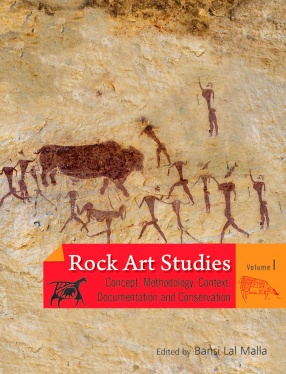This book is a systematic overview of the temple architecture built in eastern India between the ninth and sixteenth centuries. Spanning eight hundred years, it defines the tradition of Temple Architecture of eastern India and examines the traits of continuity and of disruption in the tradition. In the absence of many extant examples of temples in the region during this whole period, the study uses the architectural fragments and votive shrines housed in various archives and museums of the world. The study locates and identifies more than forty temples of the period up to 1500 CE, and goes on to document and analyse them in order to develop an understanding of a regional type of nagara temple. The study identifies the presence of all three modes called latina, phamsana and valabhi of the north Indian nagara tradition of temple architecture. An important aspect of the study is the analysis of these latina temples in terms of their aedicular components, identifying the presence of valabhi and latina aeicules superimposed on the body of the litina temples. Another significant feature of the study is the analysis of the re-use of earlier Hindu-Buddhist architectural fragments in later Islamic structures in order to develop an understanding of the earlier architecture and to show how the re-use of such fragments influenced the architecture of the Sultanate period in a major way, forming the basis of an architectural vocabulary. In the concluding part, the origin and development of the Mughal period temples characterized by the chala, bangla and ratna types is explained, while emphasizing the continuities and elements of disruptions that had taken place since the beginning of the ninth century. The foreword of the book is written by Dr. George Michell who have earlier edited two best known books on the architecture of the region: Brick Temples of Bengal (From the Archives of David McCutchion) PUP, Princeton, New Jersey, 1983 and Islamic Heritage of Bengal UNESCO publications, paris, 1984.

Temple Architecture of Eastern India
by Ajay Khare
$112.50
$125.00
In stock
Free & Quick Delivery Worldwide
All orders amounting to US$ 50 or more qualify for Free Delivery Worldwide. For orders less than US$ 50, we offer Standard Delivery at $14 per book.
ABOUT THE AUTHOR Ajay Khare
Prof. Ajay Khare earned his doctorate from De Montfort University, Leicester, UK, where his work about the early temples of Bengal under Dr. Adam Hardy was highly appreciated. For his PhD he obtained the much-coveted Research Bursary of the University. An architect and conservationist educated at Lucknow University and School of Planning and Architecture, N. Delhi, Prof. Khare was the recipient of the fellowship of the Charles Wallace India Trust, London in 1993-95 during his second post-graduation in conservation studies at ork University, UK. He has many conservation and architectural projects to his credit in Rajasthan where he practiced with his architect wife, Rachna. Since 1998, Prof. Khare is teaching architecture and conservation, initially at Indraprastha University, N.Delhi and presently at Birla Institute of Technology, MESRA, Ranchi. He has edited many conference proceedings and written articles,research appers and book reviews in national and international journals. In 1995, he published a monograph called 'Ghat ki Guni, Jaipur' for Rajasthan Government and presently contributing in books about Jaipur and Udaipur. Prof. Khare is vice-president of an NGO called 'DRONAH' and monitors its activities in eartern India including the publication of its bi-annual international journal called 'Context' as member of the board of editors.
reviews
0 in total
Review by Anonymous
Be the first to review “Temple Architecture of Eastern India” Cancel reply
You must be logged in to post a review.
Bibliographic information
Title
Temple Architecture of Eastern India
Author
Edition
1st ed.
Publisher
ISBN
8182900336
Length
212p., Figures; Plates; Maps; 31cm.
Subjects
similar bookssee more
Rock Art Studies: Concept, Methodology, Context, Documentation and Conservation (In 2 Volumes)
Rock art is the first visual ...
$247.50
$275.00



There are no reviews yet.